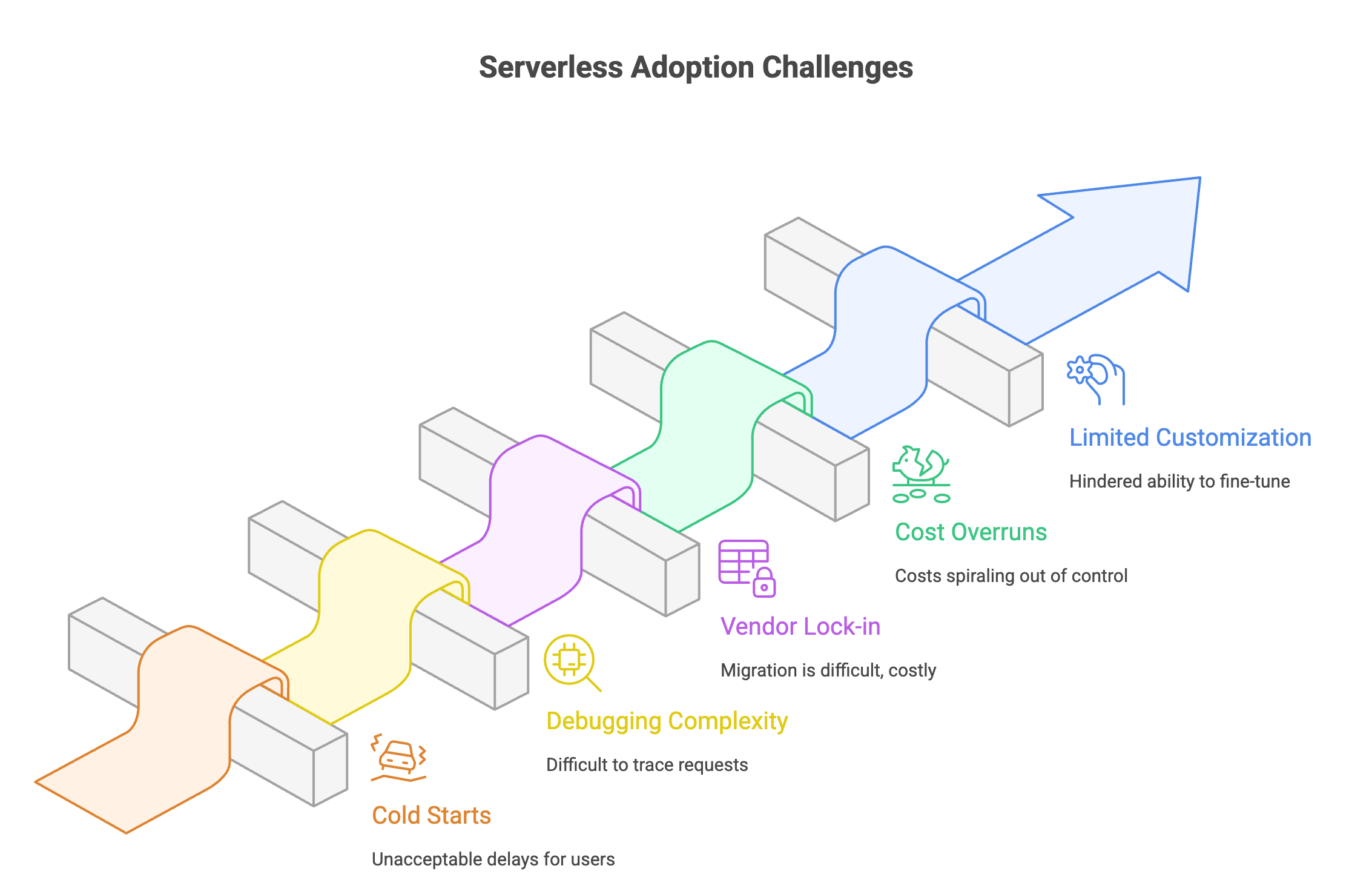When we started WorqHat, we were like every scrappy startup:
- Tiny team
- Tiny budget
- Big dreams
- Even bigger coffee consumption
Our number one goal? Ship something as fast as we can, before our runway ran out and we had to go back to being LinkedIn Thought Leaders to pay our Office Rents. (You need to earn money somehow). So we did what every self-respecting startup in 2023 would do: we threw our backend into Cloud Run and Vercel and called it a day.
Why Serverless Was Our Love Language
At the time, serverless was basically the perfect Bumble match:
- They handled the infrastructure. We just shipped code and looked productive.
- They only charged us when we used them. Idle time? $0. Sweet.
- They scaled instantly. A tweet goes viral at 2 a.m.? We don’t have to wake up and SSH into anything.
We moved fast, broke nothing (except maybe our sleep schedules), and shipped features at a speed that would make corporate IT departments cry.
Then Enterprise Customers Happened
Fast forward: WorqHat gets traction, some funding, and — oh no — actual enterprise customers. The kind that have:
- SLAs that make your palms sweat
- Compliance teams who can smell a multi-tenant environment from across the internet
- “We expect 99.999% uptime” in bold, underlined font
Suddenly we realised that our serverless honeymoon started looking a bit… complicated.
The Breakup List
Cost Plot Twist
- Serverless is cheap when you have spiky, low traffic.
- Serverless is not cheap when you’re running millions of requests 24/7. Suddenly we were paying more than we would have if we’d just rented a beefy machine and kept it busy.
Cold Starts: The Silent SLA Killer
- A few hundred milliseconds here and there? Fine for casual users.
- Unacceptable when your client’s integration times out during a sales demo with their boss on the call.
“Logical Isolation” Is Not “Physical Isolation”
- Enterprises want their data physically separated from everyone else’s. “Don’t worry, AWS says it’s secure” is not a valid answer in those meetings.
Serverless Isn’t Actually Server-Less
- We still had to manage provisioned concurrency, IAM policies, and weird distributed tracing setups — just without the control or root access to make our lives easier.
The Post-Breakup Glow-Up: Running Our Own VMs
So, we did the unthinkable for our early selves: we got our own virtual machines. Not just one — a high-availability cluster with:
- Load balancers to keep traffic flowing smoothly
- Automated failover so one machine dying isn’t a panic event
- Full root access (hello, custom firewalls and OS hardening)
- The ability to give a customer their own single-tenant environment
Yes, it’s more work. Yes, we have to actually think about hardware specs now. But:
- Performance: No cold starts, no jitter, consistently low latency.
- Cost predictability: Fixed monthly costs instead of “surprise, you went viral and now your AWS bill is a horror story.” (Hello Random Google Bill lying in my Inbox)
- Security & Compliance: We can pass audits and win deals that serverless would have lost us instantly.
The Results (aka Why It Was Worth It)
- Enterprise deals closed because we could promise dedicated environments.
- Latency metrics tightened across the board.
- Uptime hitting 99.999% without sweating.
- Sales now use our infrastructure as a selling point, not a liability.
What We Learned
If you’re an early-stage startup, serverless is amazing. Use it. Abuse it. Ship features like your life depends on it.
But if you’re going after enterprises, at some point you’ll need:
- Predictable performance
- Compliance that passes boardroom sniff tests
- The ability to say, “Yes, your data is on its own private box”
That’s when you stop chasing “infinite elasticity” and start chasing predictable power.
We still have a soft spot for our serverless days — it got us here. But now? We run our own VMs. We know their names. We pet them. And when a customer says “Can I audit your network?” we can smile and say, “Sure — here’s the root password.”





